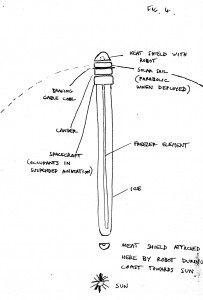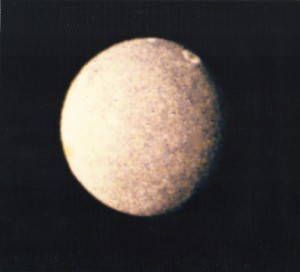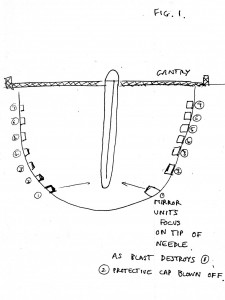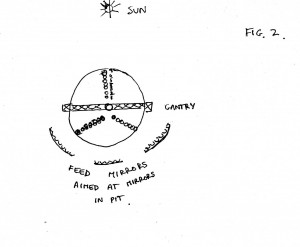28 November 2017
![]() Duncan Lunan continues to outline the story of the unpublished Hawke/McLane story THE ICE NEEDLE. The Japanese expedition has launched its experimental manned craft towards Umbriel , a moon of Uranus where previously an unmanned probe has located an alien artifact:
Duncan Lunan continues to outline the story of the unpublished Hawke/McLane story THE ICE NEEDLE. The Japanese expedition has launched its experimental manned craft towards Umbriel , a moon of Uranus where previously an unmanned probe has located an alien artifact:
The alien artifact ” is (was) in fact an enormous ring-shaped space habitat (40 miles across), a gigantic version of the ‘Stanford Torus’ space settlement design. John Varley had already done something similar in his novel “Titan” and sequels, but his was one huge living organism with its own complete interior ecology.
Our one did have a complete interior ecology, but wasn’t itself alive. It entered the Solar System a million or more years ago after a multi-generation interstellar voyage, and is lying broken and wrecked on Umbriel. So when the Japanese scientists are awakened. after the Needle has used its rocket motors, finally, to put itself into polar orbit around Umbriel, there it is. NB: it has to be polar orbit, to pass over the artefact. Since Umbriel like almost all moons has a trapped rotation, you can’t do your usual trick of calling it ‘synchronous orbit’ no matter the altitude. Anyway, the ending requires the Needle NOT to be in synchronous orbit.)
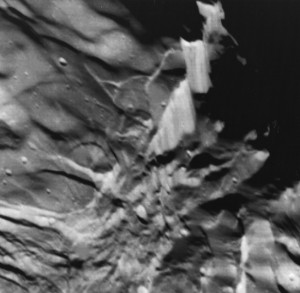
The chief scientist is much older than the others, so he is the one to remain in the Needle while the younger ones go down in the lander. (This lets you bring in one or more young women for the delectation of the Daily Record.) They’ve sent a message to Japan confirming their triumph thus far, but of course there’s been no answer. They don’t know about the disaster – this is still important. Their plan is to land and explore, then return to the Needle and go back into suspended animation until rescued. But for the sake of Japan they’ve been prepared all along for it to be a one-way trip if their plans don’t work out.
The situation is that the ring of the grounded habitat is broken to bits (dramatic images), but the hub is standing upright, and there’s an obvious point of entry through one of the snapped-off spokes. No doubt that’s where the control rooms will be. But as they make their way in along the spoke, suddenly the tunnel seals itself behind them and begins to pressurise – they’re in an airlock, and it’s working. When the inner door opens they press on along the tunnel until they see an end to it ahead, and light beyond – at which point they realise that the whole tunnel is swaying slightly underfoot as they walk along it. Next there’s a slithering sound along the outside of the tunnel; a huge eye appears at the end; and as the tentacle wrapped around the tube is whipped away, it puts the tunnel into a spin, they’re thrown off their feet and the contact with them is broken.
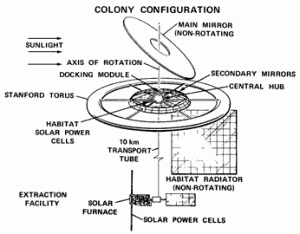
©NASA
At this point we switch to the Hope, which is now approaching Uranus from ‘out of the ecliptic’. As it swings round the planet, avoiding the rings, it passes close to the inner moon, Miranda (Fig. 7). This is so that we can see the extraordinary surface features, including the huge cliffs (Fig. 8), which indicate that Miranda has been pulled or blown apart and re-assembled. Features like the ‘chevron’ indicate massive distorting forces at work in the past, and all over the surface we see geologically incompatible terrain jammed together – so roughly that Miranda isn’t even properly spherical, and at the site of the cliffs, the level is way out of line where two chunks of the moon have been ground together.
Arriving at Umbriel, the Hope team make contact with.the Japanese leader in the Needle and are told about the loss of contact with the landing team. Fortuna warns, however, that the entity in the habitat core is already monitoring him, and it will be safer to leave him isolated for the moment. A rescue attempt is mounted by the Task Force. At the point where the trap in the airlock tube is sprung, McLane gets a shot off and hits the eye – allowing the team to stabilise the tube and retreat under cover of Fortuna’s powers.”
to be continued. Skipper Prossitt
